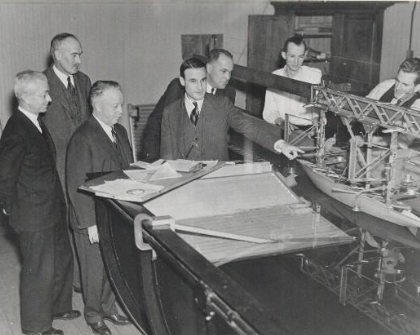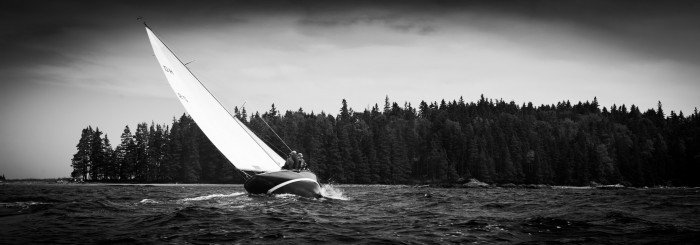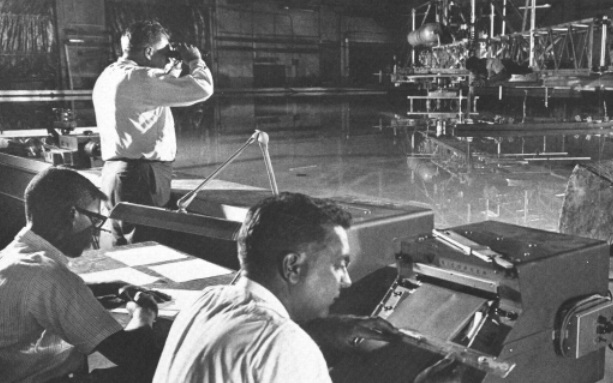In 1932 (LOA: 34’6″ LWL: 23’0) Gimcrack was designed and built on spec for Drake Sparkman, partner of Olin Stephens in response from a committee composed of members from the Larchmont, American and Seawanhaka yacht clubs wanting a one design yacht that would beat the Starling Burgess designed “Atlantic Class” and the Mower designed “Sound Interclub”
The Era of Tank-Testing
Although Bjarne Aas’s International One design was chosen by the clubs at the time, Gimcrack would go one to represent a pivotal important time in the history of Sparkman & Stephens. Gimcrack was one of the first boats to be tank tested at the Stephens Institute of Technology in Hoboken, New Jersey. Her design calculations would go on to be coined the “Gimcrack Coefficients”
In 1932 the problem of using scale model testing to predict upwind performance was first solved by Dr. Kenneth S.M. Davidson, professor of Mechanical Engineering at the laboratory. First using the campuses swimming pool, which perplexed and annoyed fellow classmates wanting to use the pool. His early experimental endeavors led Davidson to obtain a $5,000 grant from the Research Corporation of New York, which allowed him to then construct an experimental towing tank where the sensitive dynamometers were fixed to small scale models. The testing was performed and were correlated with full size testing in actual conditions.
In 1933 Gimcrack, was fitted out with 70-odd data points, with a damp-spring dynamometer capable of measuring side force as well as drag. With her mast and rigging in place she was towed from Larchmont to City Island, New York.

The side force measurement test from the scale model and Gimcrack were combined to form the upwind performance prediction methodology and sail force coefficients the “Gimcrack Coefficients” which determined drag at the points where heeling moment due to the sails was equal to the righting moment of the hull.
This new technology would go on to be used in designing the 1937 America’s Cup winner Ranger, successfully predicting relative performance of the 6 Meter yachts Jack and Jill, 1934 yawl Stormy Weather and America’s Cup model test programs for both challengers and defenders to name a few.

Also of note the Gimcrack, as the early trial horse, became the genesis of the design of the Dark Harbor 20. In 1934, Olin Stephens took the results from the Gimcrack testing and designed the Dark Harbor 20.
Ken Davidson Mentor
Olin Stephens in February of 1988 confided in an oral history at Mystic Seaport that Ken Davidson was his mentor in applying science to sailboat design. “I would say the only bad advice he ever gave me was this: I said, ‘I don’t worry much about the naval architecture, I’m not going to school as a naval architect, but I wish I knew more about calculus.’ He said. ‘Oh, you can always get someone to do that for you.” (laughter) Since I’ve gotten involved with the computer, I wish I could do more of it myself.” Olin Stephens also states “I often kick myself, because with the knowledge that Ken had and a lot of which he passed along to me, I think we could have advanced a lot faster then we had.”


Just discovered this site from a link on boatdesign.net. My family owned the 60′ Larchmont “O” boat Georgia in the late 40’s. I’m trying to find out if anyone knows her current whereabouts.
Thanks, terrific site!
Doug Lord